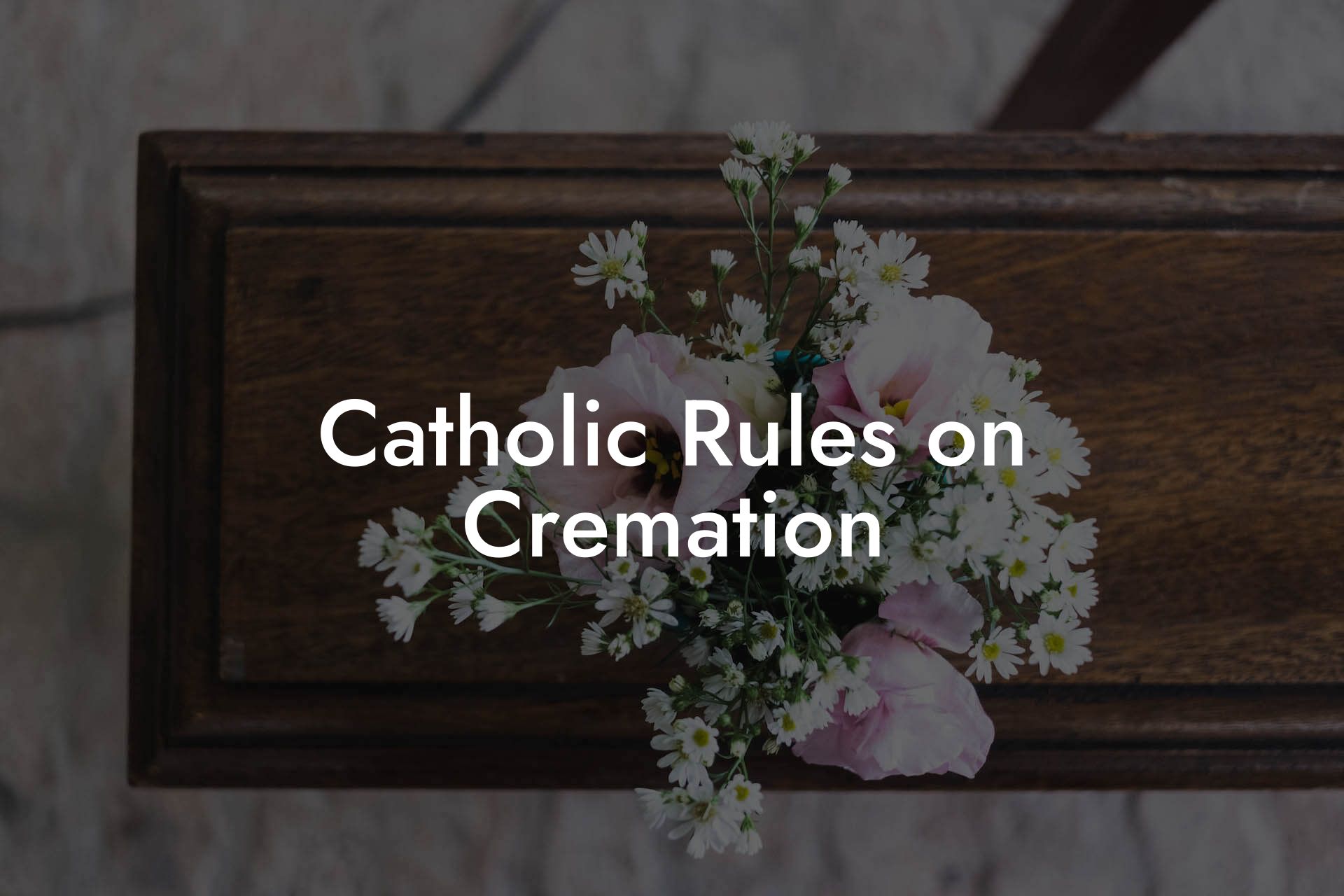Imagine if you could honor your loved ones in a way that's not only meaningful but also environmentally friendly and cost-effective. Welcome to the world of cremation, a practice that's gaining popularity among Catholics and non-Catholics alike. As the Catholic Church continues to evolve its stance on cremation, it's essential to understand the rules, myths, and benefits surrounding this end-of-life option.
We know how hard that can feel. You are sorting through precious memories, searching for the right words, and trying to hold it together when it is time to speak. It is a lot to carry.
That is why we created a simple step by step eulogy writing guide. It gently walks you through what to include, how to shape your thoughts, and how to feel more prepared when the moment comes. → Find Out More
Quick Links to Useful Sections
A Brief History of Catholicism and Cremation
For centuries, the Catholic Church prohibited cremation, deeming it a pagan practice that denied the resurrection of the body. However, in 1963, the Church lifted its ban on cremation, allowing Catholics to choose this option while still adhering to traditional funeral rites.
Today, the Church permits cremation as long as it's not chosen for reasons that contradict Christian teachings. This shift in perspective acknowledges the growing demand for cremation services and the need for environmentally conscious funeral practices.
Catholic Rules on Cremation: What You Need to Know
While the Church permits cremation, there are guidelines to ensure that the practice aligns with Catholic doctrine. Here are the key rules to keep in mind:
- Respect for the Body: The Church emphasizes the importance of treating the body with dignity and respect, even after death. This means that cremated remains should be handled and stored in a manner that reflects this reverence.
- No Scattering: The Church discourages the scattering of ashes, instead recommending that they be buried or entombed in a sacred place, such as a cemetery or columbarium.
- No Division of Ashes: The Church prohibits the division of ashes among family members or friends, as this could be seen as disrespectful to the deceased.
- Funeral Mass and Rites: Catholics who choose cremation are still entitled to a Funeral Mass and other traditional funeral rites, which should be celebrated in the presence of the cremated remains.
By understanding these guidelines, Catholics can ensure that their cremation choices align with the teachings of the Church while still honoring their loved ones in a meaningful way.
Myths and Misconceptions About Catholic Cremation
There are several myths surrounding Catholic cremation that can make it difficult for families to make informed decisions. Let's debunk some common misconceptions:
- Myth: The Church doesn't allow cremation. Reality: The Church permits cremation as long as it's not chosen for reasons that contradict Christian teachings.
- Myth: Cremation is a pagan practice. Reality: While cremation was once associated with pagan cultures, it's now a widely accepted practice among people of various faiths, including Catholics.
- Myth: You can't have a Funeral Mass if you're cremated. Reality: Catholics who choose cremation are still entitled to a Funeral Mass and other traditional funeral rites.
By separating fact from fiction, families can make informed decisions about cremation that align with their faith and personal preferences.
The Benefits of Catholic Cremation
Cremation offers several benefits that align with Catholic values, including:
- Environmental Stewardship: Cremation is a more environmentally friendly option than traditional burial, as it reduces the need for land, resources, and embalming chemicals.
- Cost-Effective: Cremation can be a more affordable option than traditional burial, allowing families to allocate resources to other meaningful ways of honoring their loved ones.
- Personalization: Cremation offers a range of memorialization options, from traditional burials to scattering gardens, allowing families to personalize their farewell rituals.
By choosing cremation, Catholics can honor their loved ones while also promoting environmental sustainability and fiscal responsibility.
Resources and Community Support: Your Next Steps
If you're considering cremation for yourself or a loved one, it's essential to connect with resources and communities that can provide guidance and support. Here are some next steps to consider:
- Consult with a Catholic Funeral Home: Reach out to a Catholic funeral home or cremation service that's familiar with Church guidelines and can provide guidance on funeral rites and cremation options.
- Connect with a Grief Support Group: Join a grief support group or online community to connect with others who have experienced loss and are navigating the grieving process.
- Explore Memorialization Options: Research different memorialization options, such as scattering gardens, columbaria, or memorial walls, to find a way to honor your loved one that resonates with your faith and personal preferences.
By seeking out resources and community support, you can ensure that your cremation choices align with your faith and provide a meaningful way to honor your loved ones.
Frequently Asked Questions About Catholic Cremation
Here are some frequently asked questions about Catholic cremation:
1. Is cremation allowed in the Catholic Church?
Yes, the Church permits cremation as long as it's not chosen for reasons that contradict Christian teachings.
2. Can I still have a Funeral Mass if I'm cremated?
Yes, Catholics who choose cremation are still entitled to a Funeral Mass and other traditional funeral rites.
3. What should I do with the cremated remains?
The Church recommends that cremated remains be buried or entombed in a sacred place, such as a cemetery or columbarium.
4. Can I scatter the ashes?
The Church discourages the scattering of ashes, instead recommending that they be buried or entombed in a sacred place.
5. Is cremation more environmentally friendly than traditional burial?
Yes, cremation is a more environmentally friendly option than traditional burial, as it reduces the need for land, resources, and embalming chemicals.

